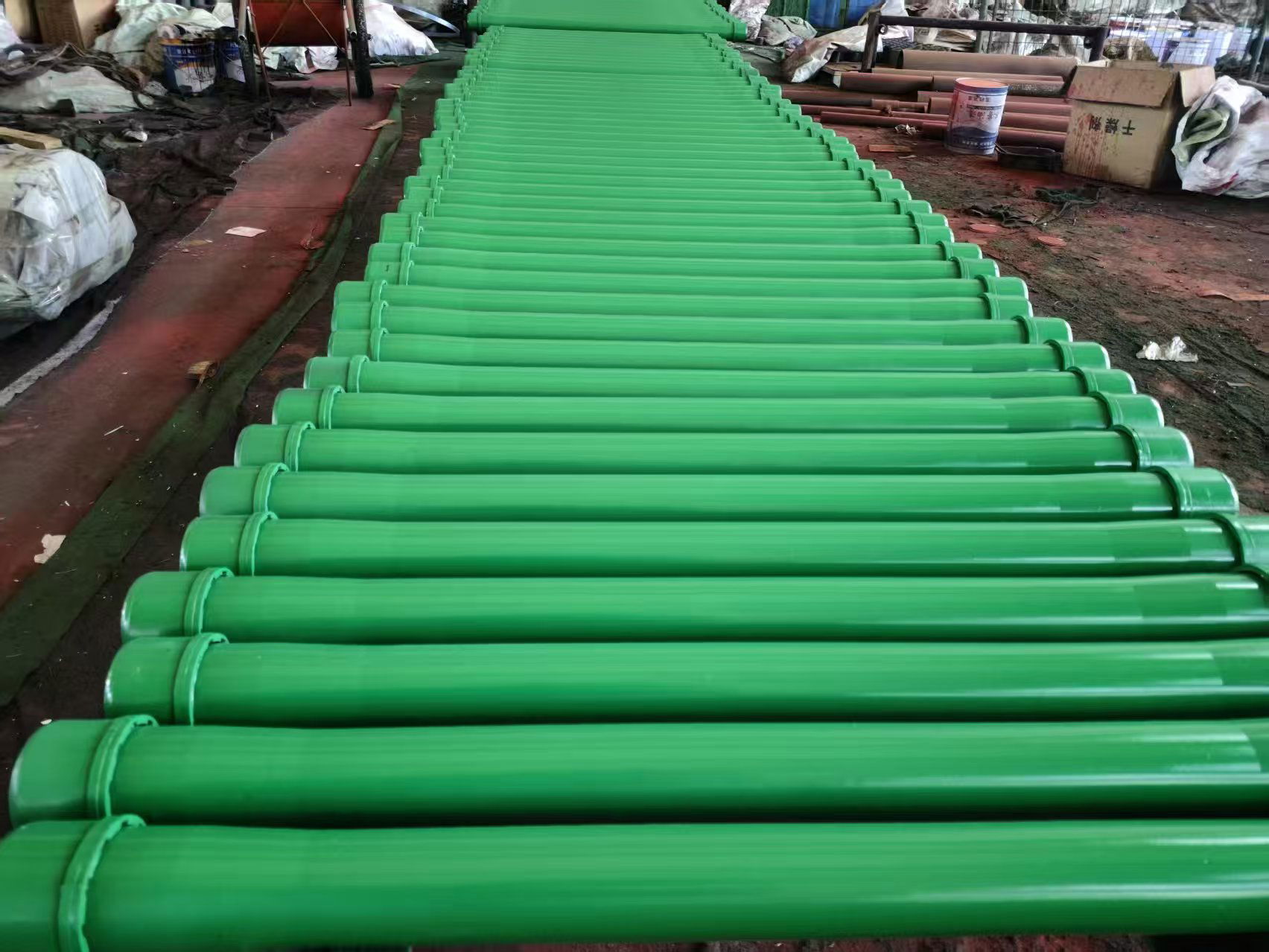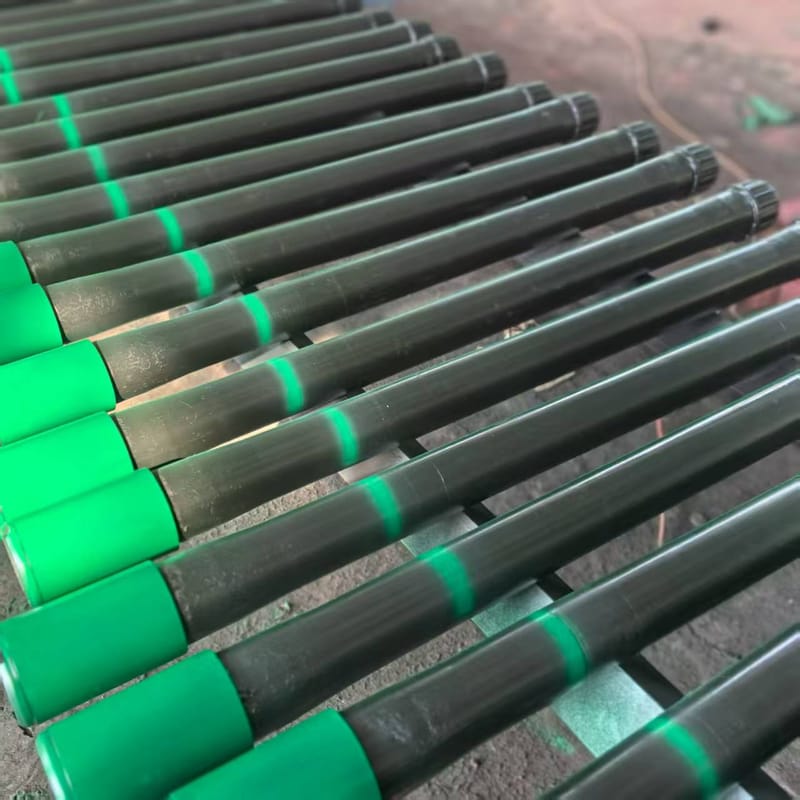2-3/8“ 8RD EUE X 2FT J55 TUBING PUP JOINT PXP
A tubing pup joint is a specialized short-length pipe segment used in petroleum engineering as an integral component of tubing strings. It functions primarily to fine-tune the total length of the tubing assembly during well completion or workover operations, ensuring precise positioning of downhole tools like packers or safety valves within target zones.
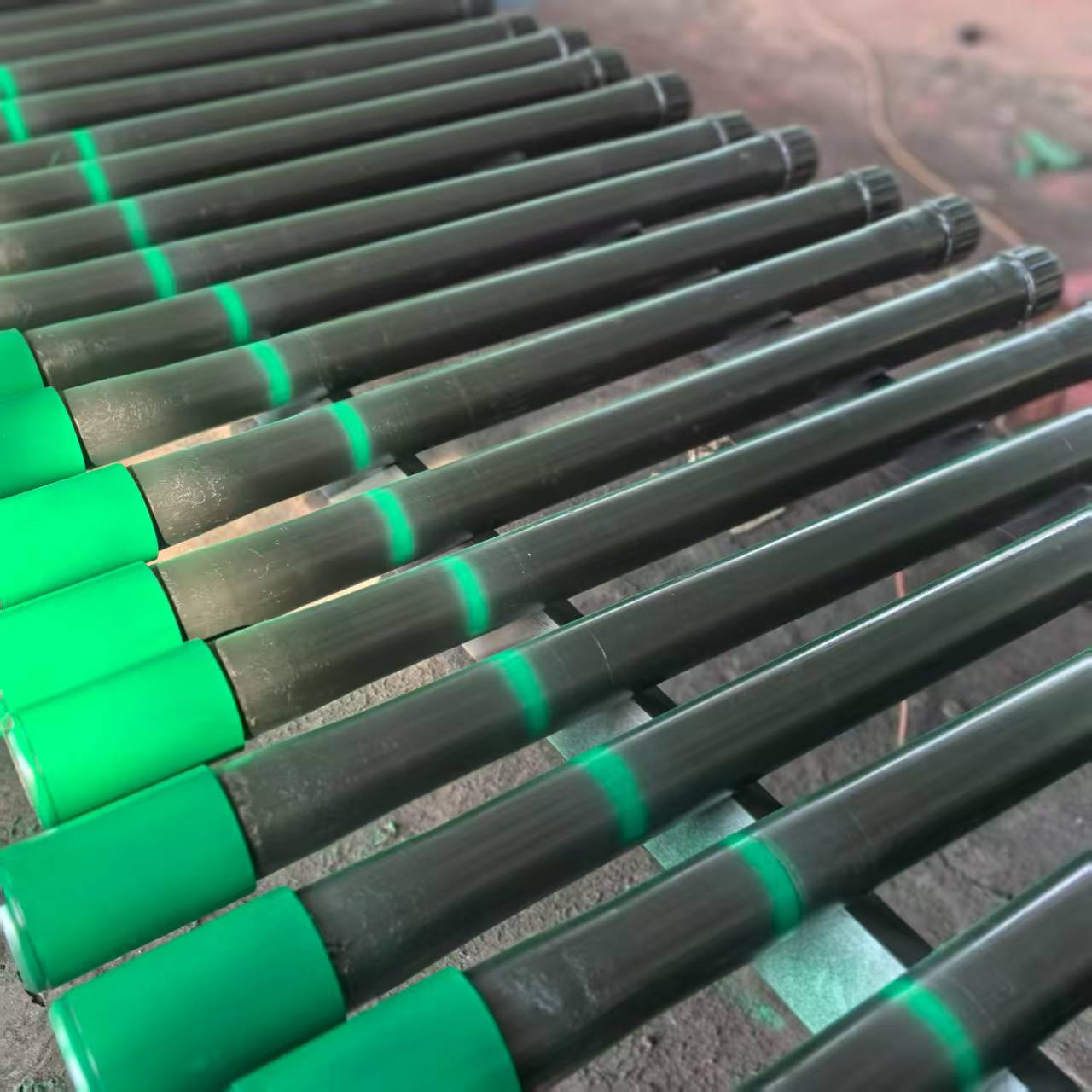
Key Features
Adjustment Capability
- Acts as a spacer to compensate for cumulative thread engagement errors in tubing strings, enabling ±1 ft depth accuracy.
- Standard lengths range from 1 ft to 30 ft, with common sizes including 2 ft, 4 ft, and 6 ft segments.
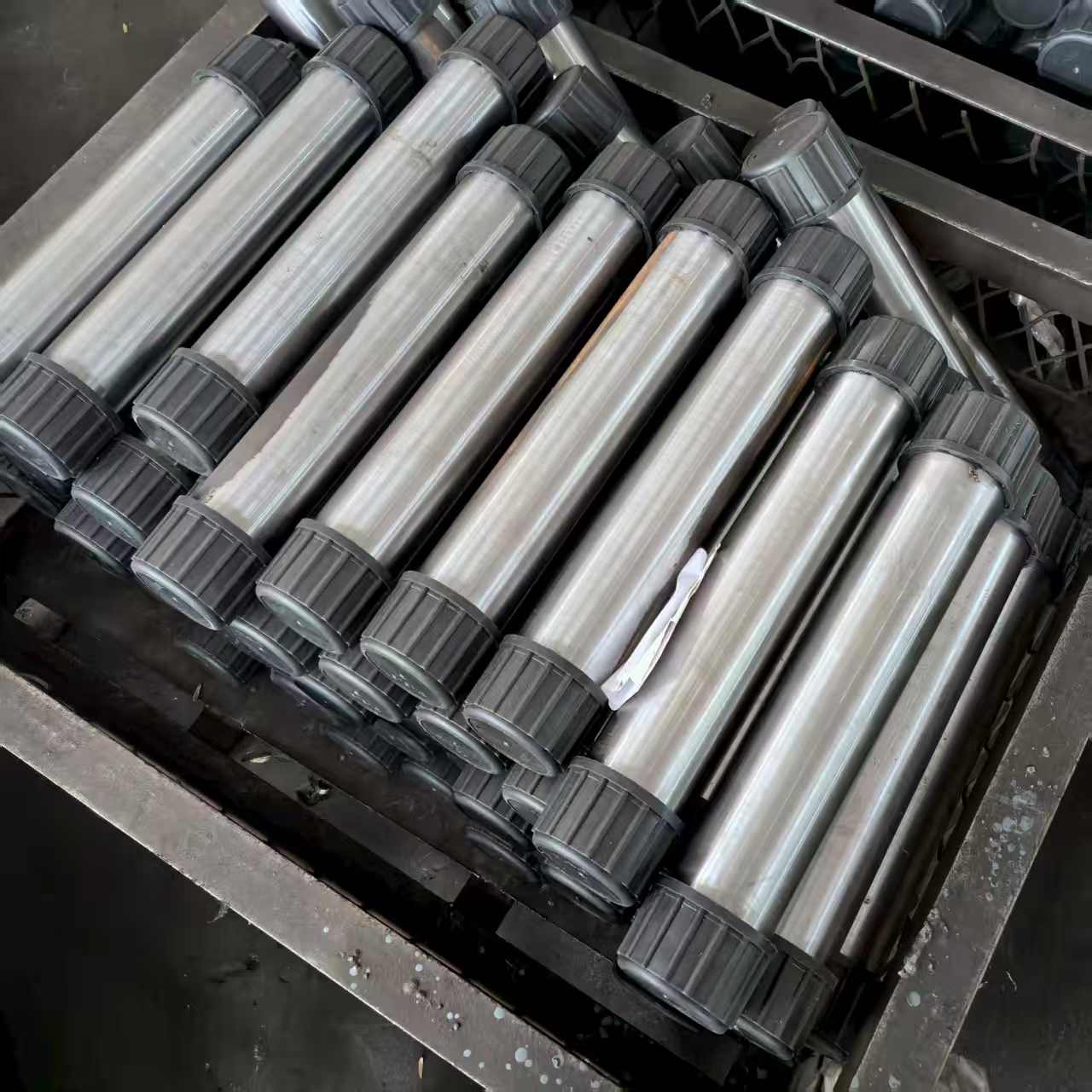
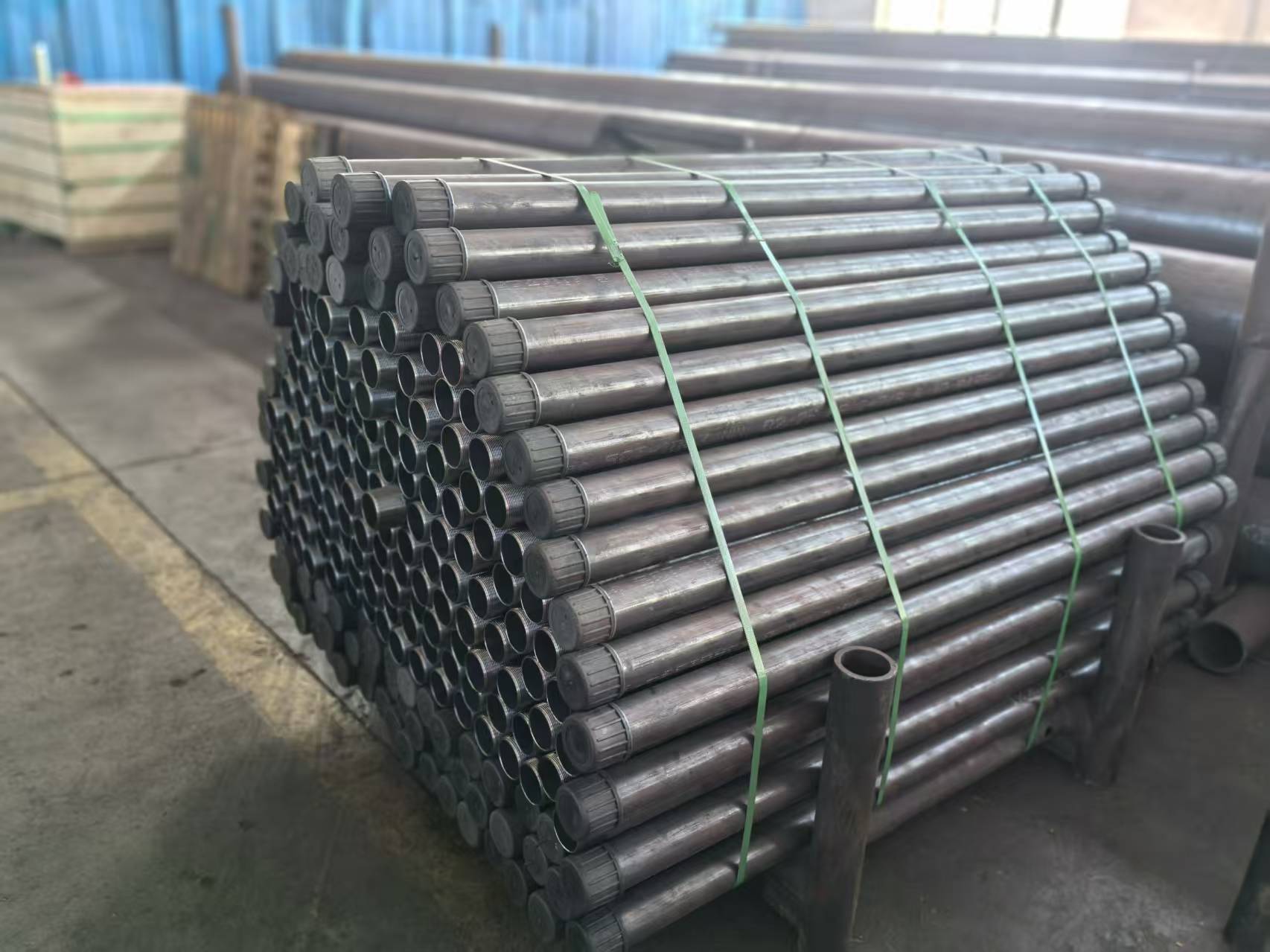
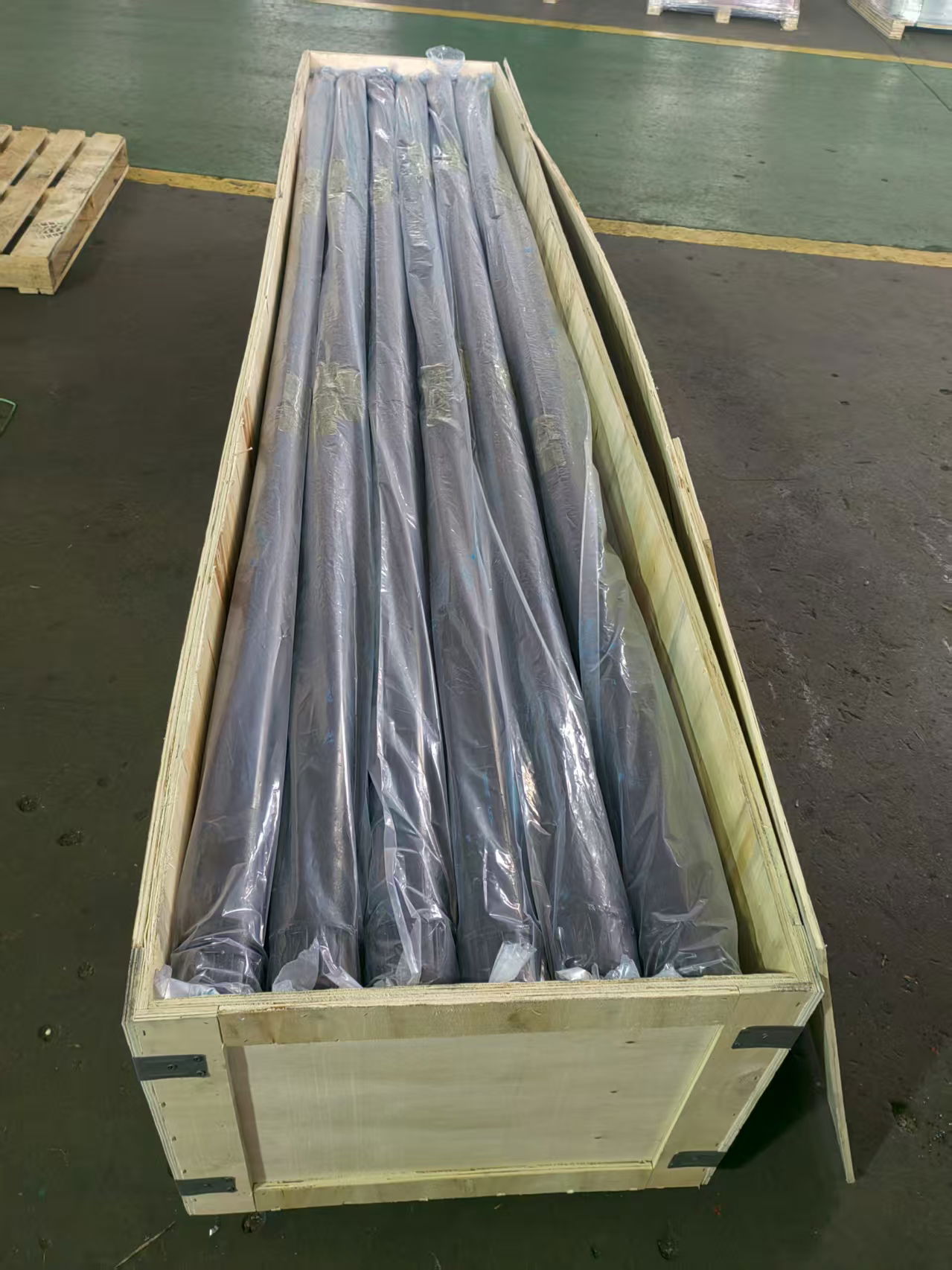
Technical Specifications
- Dimensions: Outer diameters span 1.315–4.5 inches (e.g., 2-3/8", 2-7/8", 3-1/2").
- Connections: Features API 5B-compliant threads:
- NUE (Non-Upset End)
- EUE (External Upset End)
- Premium metal-to-metal seals.
- Pressure Rating: Wall thickness varies to withstand specific wellbore pressures (e.g., 2-3/8" EUE handles 4.7 lbs/ft load).
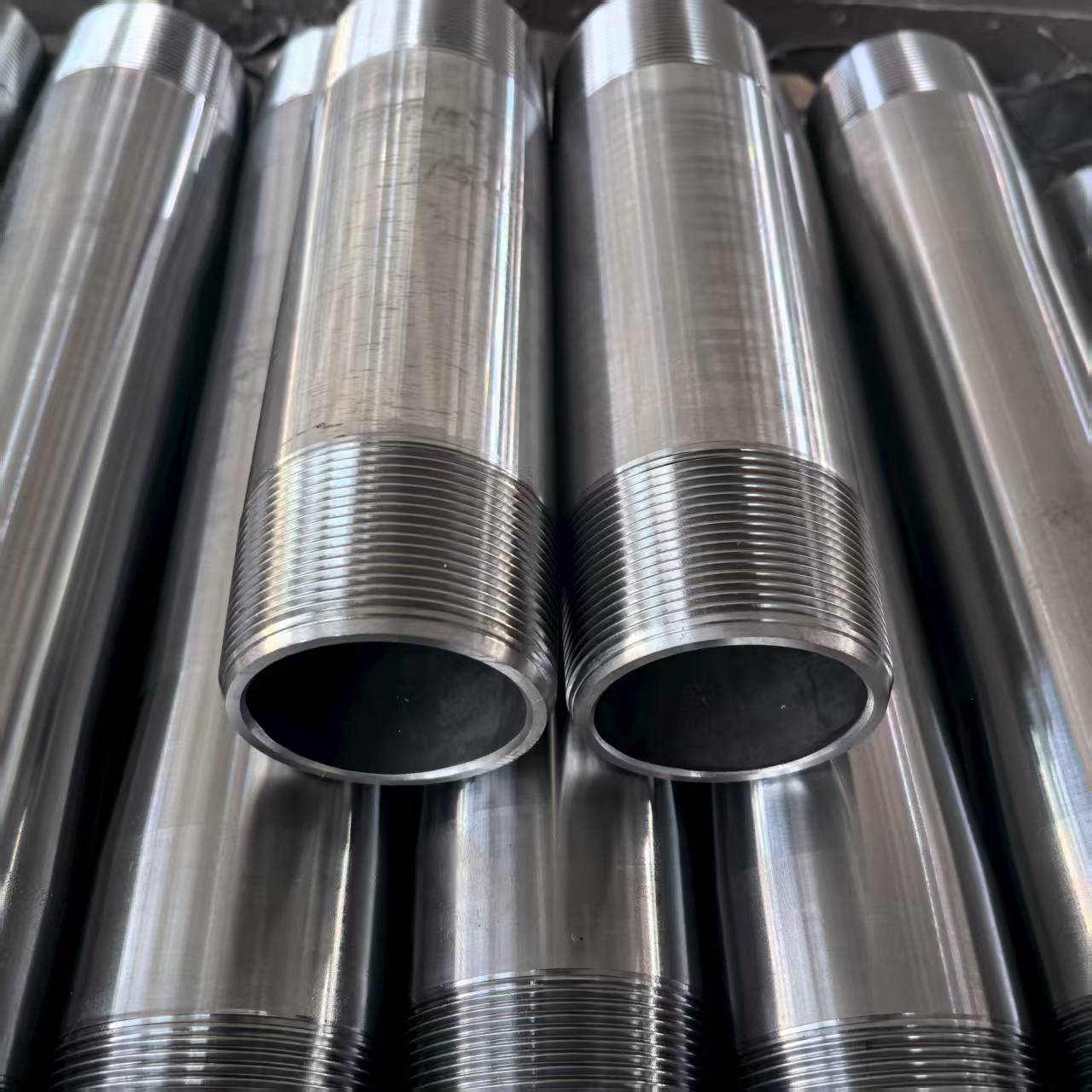
Material & Durability
- Constructed from API 5CT-grade steels (e.g., J55, N80, L80, P110), with corrosion-resistant variants like L80-13Cr for H₂S-rich environments.
- Surface treatments include phosphating and external coatings to prevent thread galling and enhance corrosion resistance.
Primary Functions
- Depth Calibration: Ensures exact placement of completion tools (e.g., packers) by adjusting tubing string length.
- Tool Integration: Connects tubing to downhole equipment (e.g., safety valves) while maintaining pressure integrity.
- Complex Well Adaptation: Serves as transition joints in deviated/horizontal wells or integrates with expandable technologies for radial sealing.
Industry Applications
Deployed in:
- Well Completion: Critical for aligning perforation guns or flow control devices.
- Workover Operations: Facilitates tool replacement or wellbore remediation.
